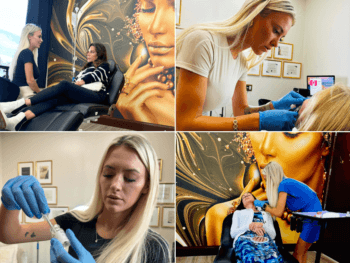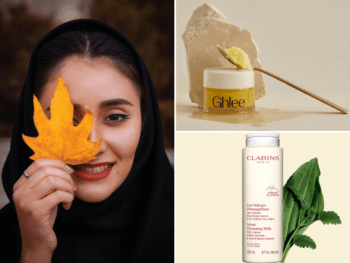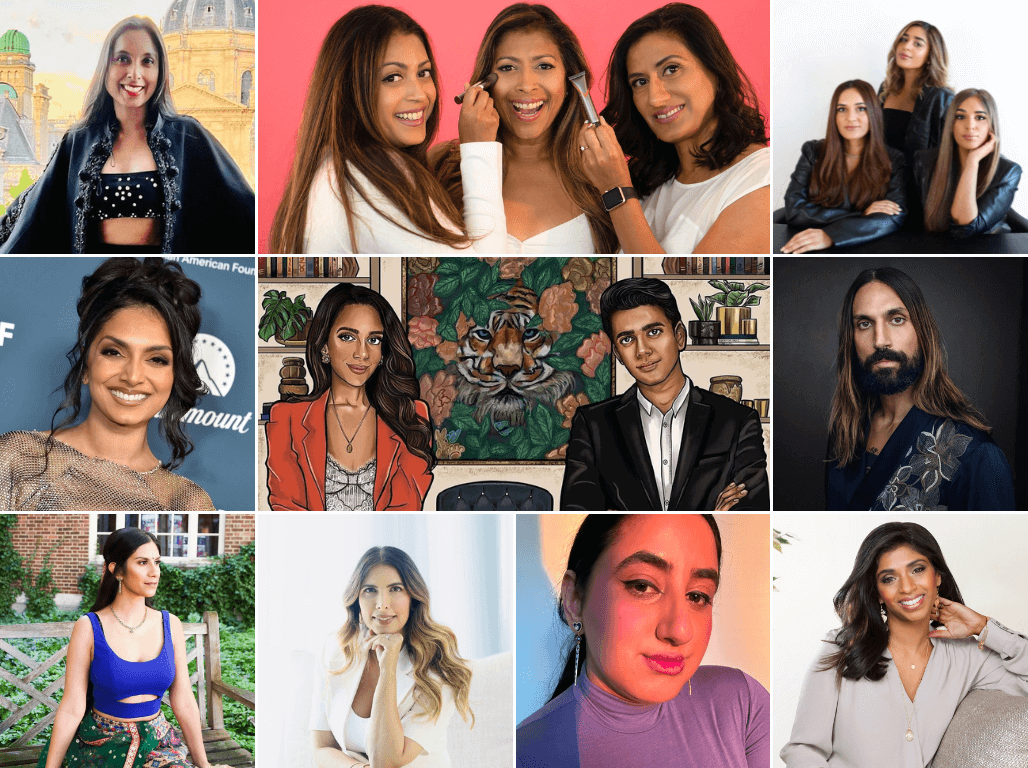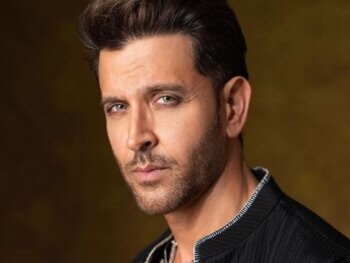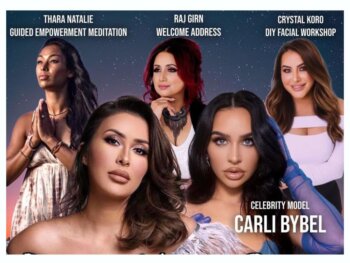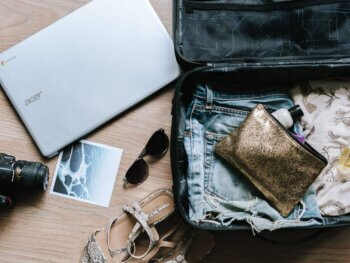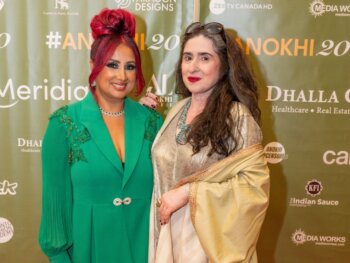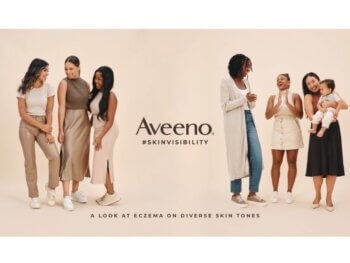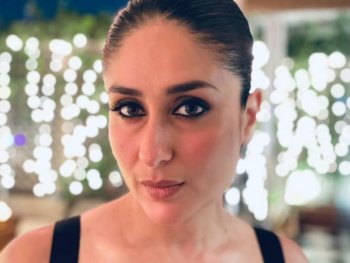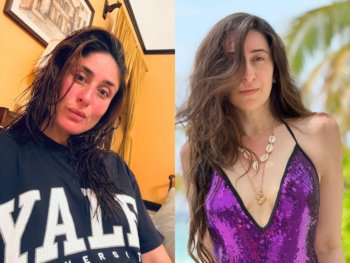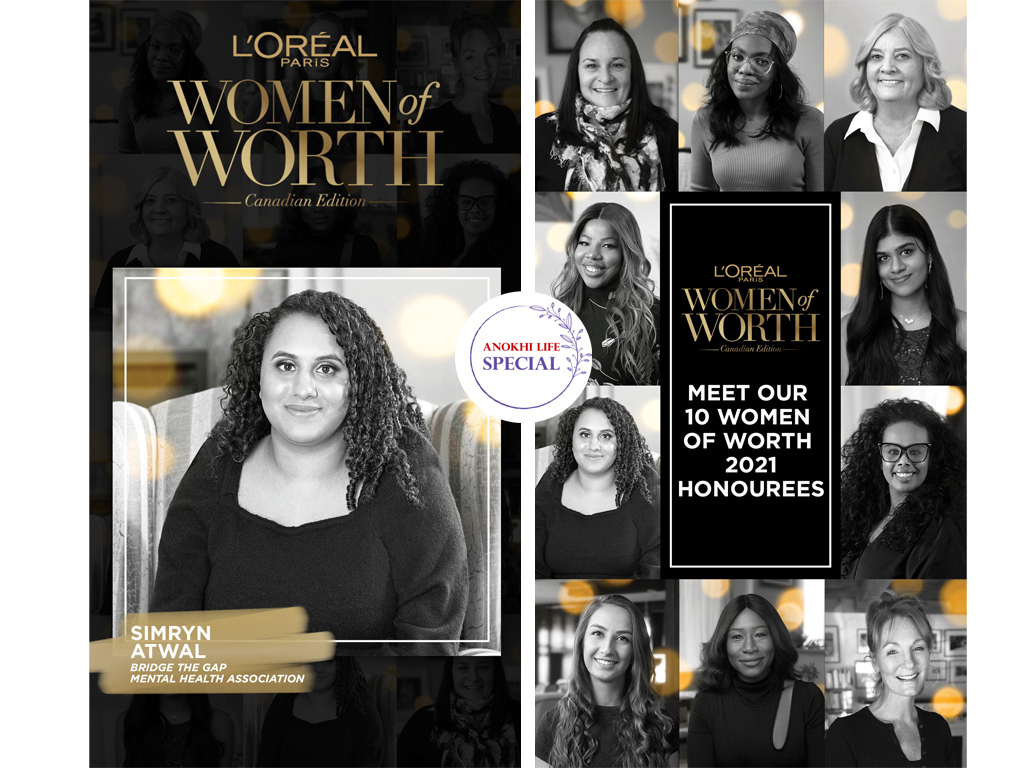
L’Oréal Paris Women Of Worth Awards 2021: Mental Health Activist Simryn Atwal Tells Us Why She Needed To ‘Bridge The Gap’ To Connect Youth & Seniors To The Right Services
Beauty Mar 10, 2021
We conclude our International Women’s Day 2021 special with the final part of our two-part coverage of L’Oréal Paris Women Of Worth Awards 2021. Today, we chat with one of the two South Asian honourees, Simryn Atwal.
The L’Oréal Paris Women Of Worth Award was handed out in honour of International Women’s Day. With 10 shortlisted finalists from all across the country, L’Oréal Paris Women of Worth celebrates the incredible works that these women are doing for their communities. Hosted by the iconic Dame Helen Mirren, this year’s awards were held virtually, where each of the 10 women were presented with a $10,000 CAD cheque and through a public voting process, the winner of the evening would walk away with an additional $10,000 CAD.
The L’Oréal Paris Women of Worth 2021 Honourees Are:
Elise Konadu Ahenkorah, #shemeets in Calgary, AB is dedicated to helping the next generation of female BIPOC entrepreneurs and innovators through providing networks, training, mentorship, and resources for professional growth.
Simryn Atwal, Bridge the Gap Mental Health Association in Surrey, BC actively delivers mental health educational programs to marginalized groups in society, making resources and peer-to-peer facilitation more accessible.
Cindy Blakely, New Circles Community Services in Toronto, ON is a multi-tiered agency that provides essential support, including clothing, training, and settlement to newcomer and low-income Canadian families.
Boma Brown, Support Network for Indigenous Women & Women of Colour (SNIWWOC) in Victoria, B.C. and Toronto, ON addresses the barriers to access reproductive healthcare for black, Indigenous, and other racialized women, by empowering them through a holistic and integrated model, offering a range of services to women.
Rhonelle Bruder, Project iRISE in Toronto, ON is a survivor-led organization that offers innovative skills and leadership development programs for at-risk youth and survivors of human trafficking and gender-based violence.
Dr. Marie Josée Dubois, Les Enfants GIOIA in Estrie, QC provides children, adolescents, and young adults suffering from rare and incurable diseases, along with their families, the opportunity to experience joy through learning, play, wellness, and companionship.
Evelyn Fox, Communities for Zero Violence (CZV) in Toronto, ON is an advocacy and awareness non-profit agency that aims to take a holistic approach to connect communities in order to eradicate gun violence while supporting victims and survivors.
Meseret Haileyesus, Canadian Centre of Women’s Empowerment (CCFWE) in Ottawa, ON is a national organization that tackles financial and economic abuse among women and survivors of domestic violence through education, advocacy, and policy change.
Bita Malekian, Water Movement in Calgary, AB bridges the connection between Indigenous water treatment operators and experts nation-wide, by providing a collaborative, interactive, and accessible online platform where they can connect, share ideas, and access learning videos.
Aditi Sivakumar, My Empowerment Platform in Ottawa, ON is an all-encompassing website that provides tools and information about gender-based violence and resources for at-risk women and children facing violence during the pandemic. Some of Aditi’s initiatives with her organization include My Empowerment Packs, which are wellness kits and resource booklets for women facing violence and youth facing homelessness.
For our part one of our L’Oréal Paris Women of Worth special and our chat with Aditi Sivakumar click here!
Our Chat With Simryn Atwal
Simryn Atwal from Surrey British Colombia, realized from personal experience that inner-city and marginalized children weren’t given the proper guidance on where to look and whom to turn to when it came to accessing mental health resources. So she decided to create Bridge The Gap Mental Health Association along with her co-founder Martin Straith. When the pandemic hit, they realized that they needed to shift from their in-person speaking and mentoring roles at schools to a completely digital resource site working with schools and students. Finishing her degree in sciences from the University of British Colombia, Simryn is looking forward to starting law school next year.
Hina P. Ansari: When were you notified that you were one of the finalists for the L’Oréal Paris Women of Worth Award?
Simryn Atwal: I think I got the email probably at the beginning of February. Which was a complete surprise to me because my co-founder submitted my name and I didn’t know. (laughs). He had been asking me questions and stuff, so when I got the email, I initially thought, ‘is this an actual thing?’ if this is some sort of spam or something. I checked the email and was I was shocked. I’m completely honoured that first, they choose me and second, that my co-founder had nominated me. So, it was a big surprise. I should have probably known that something was up when he was asking me, ‘Why did you decide to get involved in mental health?’ and I was like, ‘I mean, you know my story Martin. But sure.” (laughs).
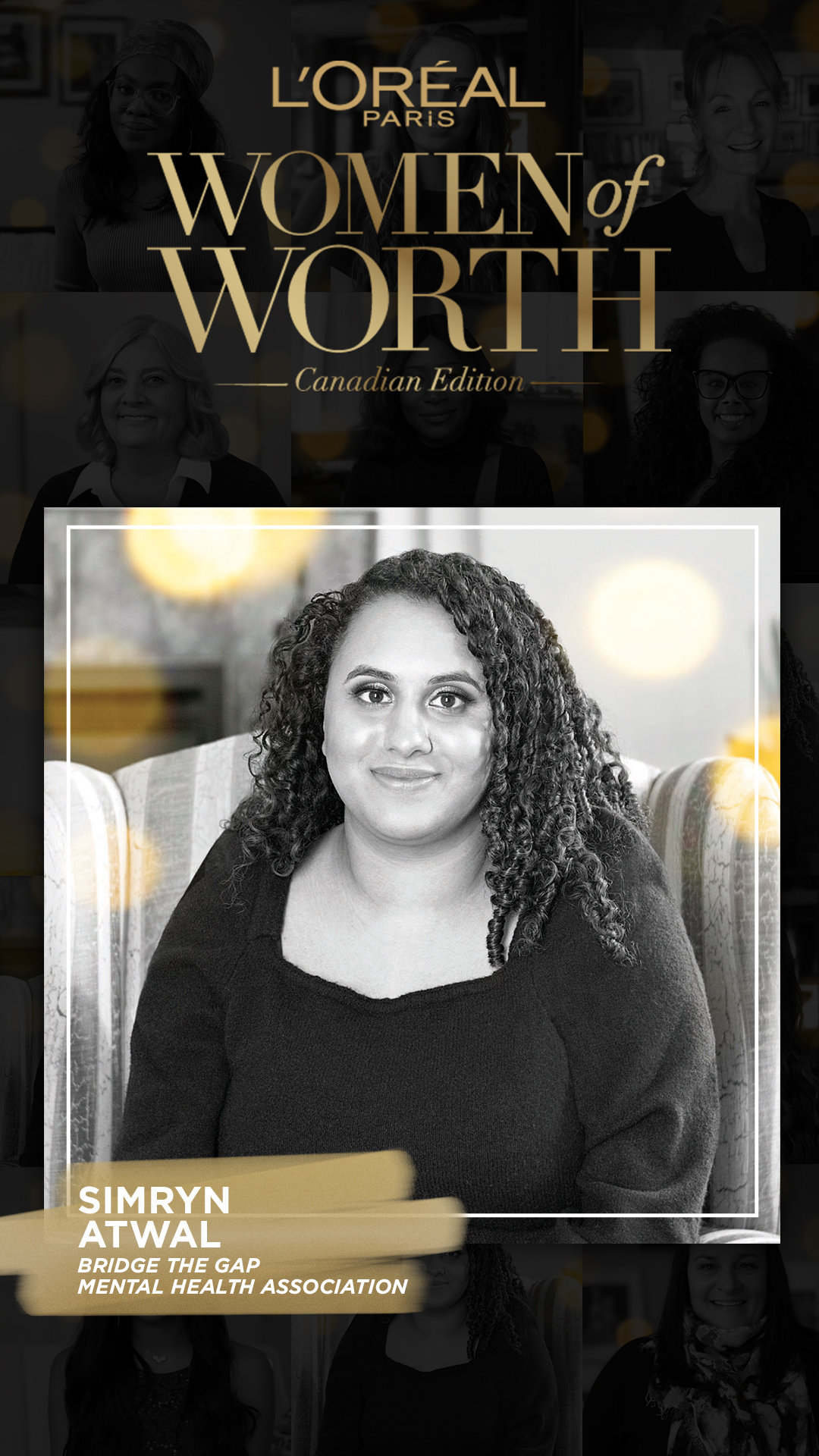
HPA: What does this nomination mean for your organization, Bridge The Gap?
SA: It’s been an amazing journey with L’Oréal. I think the number one thing that Bridge The Gap has gotten out of it is that we’ve been given this amazing platform by L’Oréal. It’s a national company and we are primarily based out of British Columbia. That’s kind of been our focus for the last couple of years. But this gave us a national platform to talk about our mental health work and the stuff we were doing. And it also gave us the opportunity to connect with so many more amazing women that had similar stories or different causes in the way that they started their own nonprofit and how they were going about it. It was extremely inspiring. Because I’m young myself, I have a lot to learn and I’m always constantly trying to learn new things.
When I started the nonprofit, I was about 22. I didn’t really know a whole lot of what I was doing. But the platform that L’Oréal has given me has allowed me to understand how other people have grown their own nonprofits and what ideas they’ve had. It’s a support system in a way which has been amazing. There’s been a huge increase of people who’ve checked out our website, checked out our digital tool kits, and our videos. I think that recognition has helped us reach a national audience with our kind of work. We’ve been able to connect with people on the East Coast and across Canada, letting us know what they’re looking for, what their unique challenges are in their community, and what type of mental health services that they would look to connect with or information up they need. So, it’s been a great learning process for us as well.
HPA: What does International Women’s Day mean to you?
SA: I think it’s a very special day to me, as somebody coming from a South Asian background, I think that there is that stigma and that cultural crossover of bringing over some more gender-based ideals. So it’s things like celebrating the birth of males over females and celebrating the men in our community instead of recognizing women’s work. When you look at India, it’s a very prevalent and pervasive issue because people bring those kinds of ideals with them when they immigrate to Canada. So, for me, it’s extremely important to have a day that celebrates being a woman, that celebrates female accomplishments, that strives for equality in any kind of community you’re from, especially with my background. It’s also understanding that females are worth it, that we are equal to males, that we have so much to contribute in the world, and we should take a day to reflect on that. And how far we’ve also come.
And I’m lucky, being a young Canadian, I have a lot more advantages than my grandparents, my grandmother and my mother did. A lot more obstacles were removed for me to be able to get an education. My mom is an occupational therapist. She was one of the first people in her family to get an education. But at that time, in the ’80s in Canada, as an Indian woman that was not the norm. But now you see that shift. And the shift in norms and attitudes. So, I’ve been lucky to be a recipient of that changing attitude that strives for females to have their own financial independence and their own career aspirations. That’s what International Women’s Day means to me.
It’s a day to learn and understand and connect with women globally and see what they have learned in their journey in life, and as their authentic selves. And learn a little bit and connect with women to see how you can grow as a person as well. I think, from all the different types of work women are doing. I like learning all these new topics and issues that I never really considered before. And I think International Women’s Day is also a good time to reflect on that.
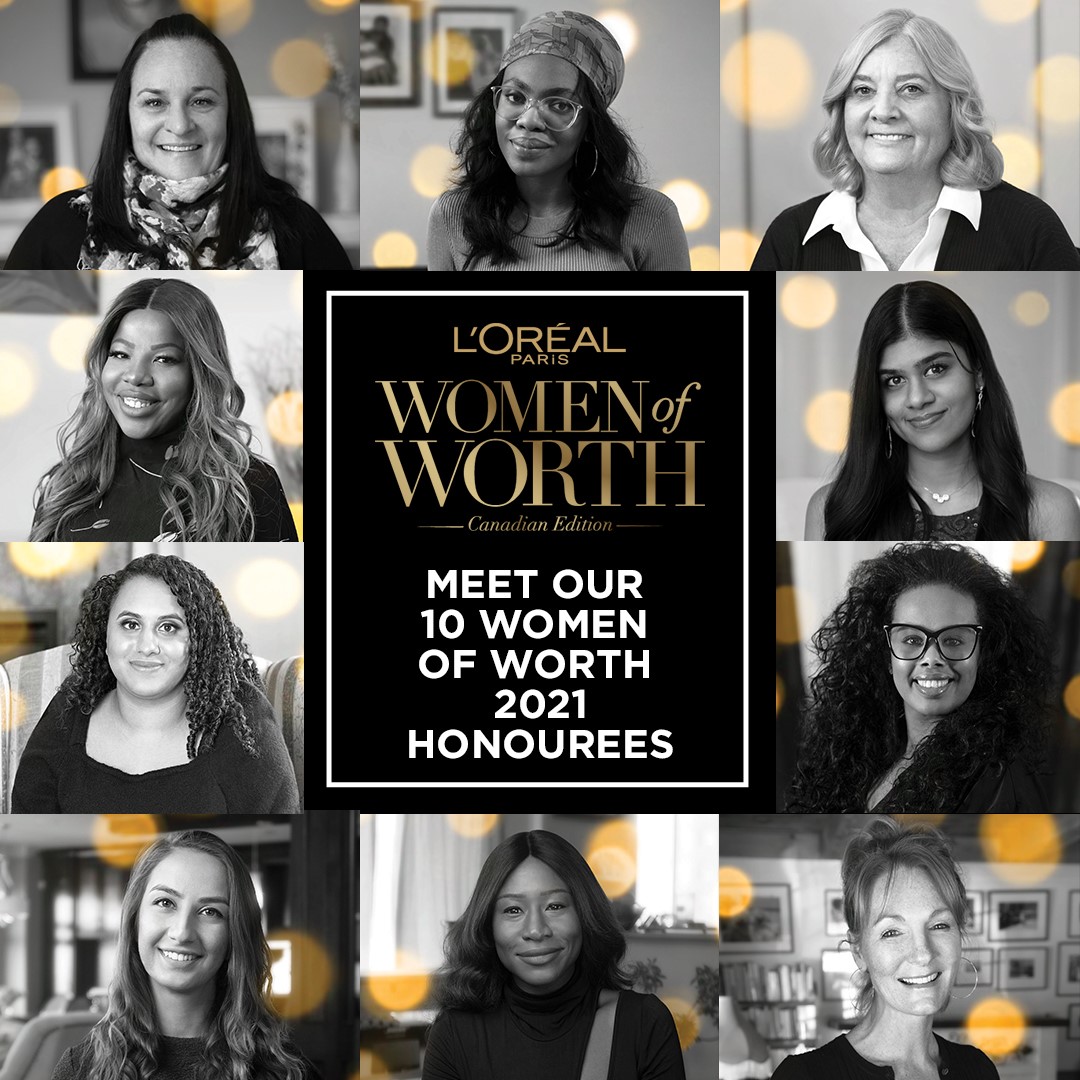
HPA: I want to talk about your personal journey. What led you down this path of becoming a mental health activist?
SA: I grew up in an inner city school environment from a diverse community. I am from Surrey British Colombia, and I love my community. But you hear things in the news about gang violence and gender-based violence and poverty. And those are definitely issues that we deal with. And in our school system specifically, because we are usually understaffed and underrepresented in the grand scheme of resources that are given to British Columbia schools. I also have a generalized anxiety disorder and I’ve dealt with that for a while. I had friends that were in deep depression, had depressive episodes, had anxiety and stress, and we all dealt with the months-long waits to see a counsellor. With the lack of available resources in our area in Surrey, we felt that students were falling through the cracks. We didn’t have the resources to be able to speak with someone right away. We were on the wait list or we didn’t speak with a [counsellor] at all. Because they didn’t have the funding to be able to do that.
We dealt with cutting of programs to help students deal with some sort of mental health issue, cutting up of arts programs, and writing programs, and sports teams. Avenues of release for students were getting cut. That was really tough, because when I needed to speak with someone I felt like there was nobody listening. This progressed in high school and then when I started university, I dealt with the same barriers, months-long wait lists, not getting referred to the type of counsellors and psychologists I needed.
And that kind of anger and desperation and despair just sat in my stomach for a while. And I didn’t really know if there was anything that I could do about it. Being a young person, you feel like you only have so many different ways to address something. And sometimes you feel like the adults are not listening, people are not listening, and you do not have the political power to make a difference.
HPA: How did you position yourself to make a difference?
SA: In 2016, I reached out to Kid’s Help Phone. I realized that I wanted to make some sort of difference even if it was a small one. I saw that Kid’s Help Phone needed volunteers. It was a service that I had used in the past so I felt that goals were really admirable. The free counselling aspect of it was seriously needed in my community and across Canada. So, I started my work with them. And that led me to be the youngest regional chair in Surrey in 2018.
And when I became the regional chair, I realized that there needed to be a youth perspective. And I wanted to focus on going into the schools in Surrey. We had fundraised $60,000 CAD for free counselling in our local area, which was amazing. It helped fund the services that students desperately needed. But I also wanted to look into having that contact-based education. We went into schools and spoke to them about the work with Kids Help Phone, and the fundraising events that we were doing. And I decided that we need to recruit youth volunteers, it’s because I wanted that representation in the community. I wanted to give them a voice and a chance for a seat at the table to talk about their mental health journeys and also be a part of making a change. So, that was a focus that I really had.
HPA: What led you to create Bridge The Gap?
SA: From my Kids Help Phone work, a recurring theme seemed to pop up at every school that we were hosting our workshops and assemblies and giving our digital toolkit at. They needed to have these open conversations with peer mentors that represented them. But also, on top of that, there was this accessibility barrier and this informational gap when it came to free counselling services in the area. There were free psychologists. There were free helplines and peer support groups. But the students who we had spoken with, had no idea what was out there. They didn’t even know where to start. It is very tough for a young person to navigate that by themselves. And that the information can get buried.
We realized there are people doing amazing mental health work across Canada and in our local area, but none of the students knew what is out there or how to start their journey or how to reach out. The work at Kid’s Help Phone was amazing but I didn’t feel like that was the platform to be able to address this need. I am seeing this problem, I’m seeing this challenge, and instead of just leaving it, instead of not addressing it, you have to do something about it. Because if you’re not going to make a difference, then who is?
So, that prompted me to start Bridge The Gap. It was to focus on the lack of connection to services in their local area, lack of mental health information on how to get started on their mental health journey. Also how to access services and resources, how to speak to their primary care doctor to get connected with the free counselling, or how to connect with the child and youth mental health team in British Columbia.
All of these floating questions was something that I really wanted to address with my organization.
What we ended up doing was speaking with healthcare professionals, psychiatrists, nonprofit leaders, and social enterprise founders and creating this kind of resource toolkit for students to be able to navigate the healthcare system and to be able to see what services were in their local area.
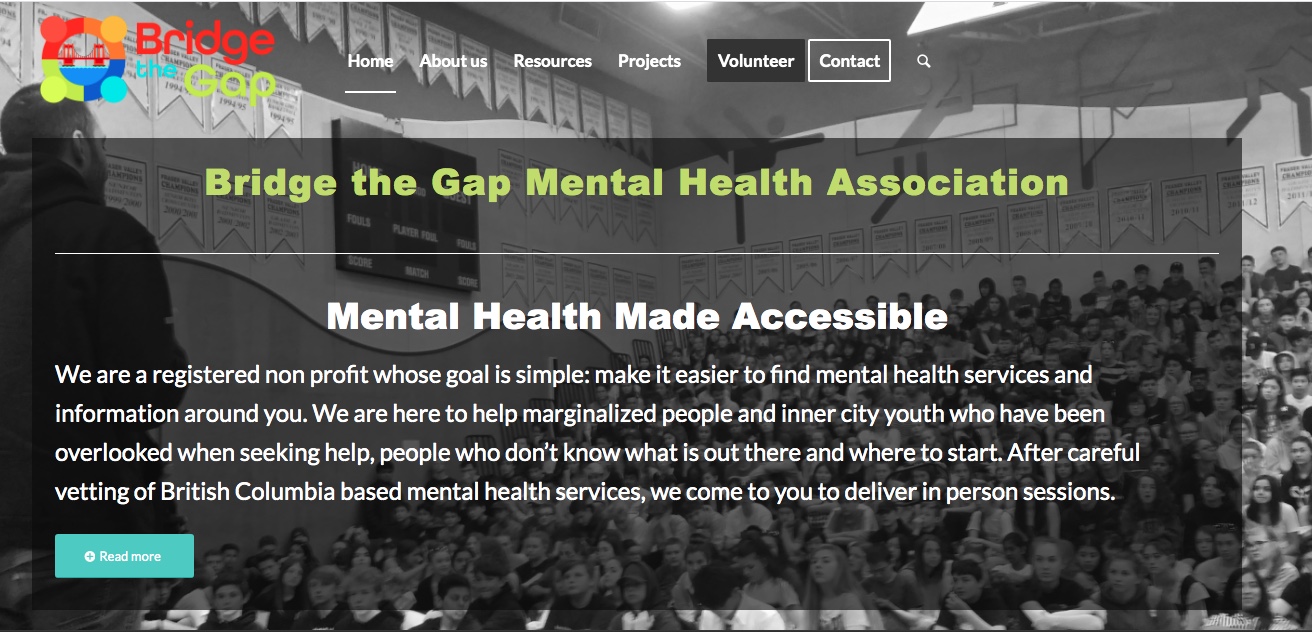
HPA: What challenges did you encounter during this process?
SA: One of the challenges is the fact that because we come from an inner city community, a lot of the services are actually based out of more affluent areas like Vancouver. Which when you’re a young student, you are not going to go all the way to Vancouver for a service. That’s not going to happen, right? There’s the transportation challenge, the geographical challenge, and the financial challenge to be able to travel all the way just to get the service you need. And those kind of obstacles in the student’s mind will be a barrier and will probably prevent most of them from reaching out to the services.
What I wanted to do was survey all the different organizations that were in the local community, organizations that weren’t really well known, that didn’t have that kind of provincial recognition or national recognition, but offered the same kind of services and offered curated services for the community that we were in. I surveyed the community and all the nonprofits, all of the healthcare organizations that we could connect with. I then created a list of resources and ways to connect with those services for students. That was one part of our work.
HPA: I loved the fact that your focus was really to expand your peer support system so there’s someone students can relate to.
SA: We want to reduce the disparity and risk factors and access to mental health services to strengthen the ability to meet the needs of diverse and inner city communities. So, in line with that, we looked at making sure that we had contact-based education and lived experience. For us, that meant having a group of speakers and peer support mentors that looked like the students that we were speaking with. They had lived experience, so they knew difficulties of dealing with a mental health issue. And we wanted to make sure that we were amplifying is diverse voices. We wanted to make sure that we had speakers that students could connect with that looked like them, that grew up in the same school system as them, that were from this community, lived in this community. Not outsiders that didn’t really understand the unique needs of the students in these schools. So, that was a really big key piece for me in creating the organization. So, through both of those kinds of facets, we created our strategy and our programs for the schools.
HPA: How many speakers did you have going to these schools in the Surrey area?
SA: I think we have a solid team of about 30 speakers when we started.
HPA: So you had your digital presence, in addition to you having your speakers visit the different schools. Then the pandemic hit. How did you pivot?
SA: It was tough because our whole platform was contact-based education, connecting with students and having that in-person connection. We saw that online resources can be lost in the sea of this informational weed. But when you’re going into schools and you’re creating that connection with the students, when they see that you look like them, you are also dealing with these intersectional factors in the community. They are likely to actually open up and have these conversations and transform into these supportive care environments for the students who live in the school. So, that was a really big key piece for our organization. So when the pandemic hit, all of the in-person programming shut down. It was impossible to go into the schools and reach out to the students.
So we created a digital platform. That meant transferring all of our resources to a digital toolkit. And then we also had the idea to create these digital mental health videos. Because we didn’t just want it to be written text on a website. We wanted the engagement and that in person, face-to-face feeling. We ended up doing videos because we wanted to create and curate these videos that were unique to our community. So, I’m speaking about services that were specific to the Surrey area. And how to access that and how to talk to your primary care doctor.
HPA: You also had students share their own mental health journeys as well correct?
SA: Exactly. We had students share their personal stories. And because we still wanted to create that database of individual stories and individual speakers, we sent these videos to schools that we were partnered with. There is a couple of videos that you can find on our database, but primarily, we send them because there is some sensitive information that some of the volunteers don’t feel extremely comfortable with this digital interface. So, what we ended up doing was sending these digital toolkits to schools and included the resources pages. But also, a bunch of mental health videos as well.
It has been tough transition. But one good thing that has come out of it was our whole organization is about targeting that accessibility gap. And by also creating the digital platform, we’ve increased the ability for students across British Columbia to access these resources and this information, which has been amazing. Because that’s been our mission and our goal of the organization. And we realized that students can access this information anywhere, in any community, at any time through reaching out online. So, it actually increased a number of students and young people that were able to connect with us and our organization and our information we were giving.
HPA: In the early months of the pandemic, there was a big push by various PSAs from the government about mental health issues during the lockdown. It was realized and addressed by changing the wording from “social distancing” to “physical distancing”. They encouraged people to connect digitally so as not lose that socialization, even though physically we lost it. Since you are in that space, did you realize that mental health was going to be a big issue as soon as the pandemic hit?
SA: Yes. As soon as a pandemic happened, I realized that it was going to result in an increasing rate of mental health issues for both youth and adults alike. Because I think at that time there was a pervasive sense of isolation and despair and not knowing what the future would hold. And a lot of young people felt like opportunities were being taken away from them. I realized that the lockdowns and social isolation were going to result in an increase of mental health issues. Now, the research has shown that there has been an increase in depressive episodes, anxiety, and the sense of loneliness, and things like body dysmorphia and eating disorders. So, the research has shown that it has actually resulted in an increase in youth dealing with mental health issues.
I had that sense at the time because of the type of conversations people were having about the pandemic. And I think sometimes people don’t realize that adult conversations affect youth. So adults who we’re talking about things that were shutting down, potentially losing their jobs, those financial hardships also affect the kids that are living in those households and increase their stressors as well. That was definitely an issue.

HPA: The lockdown definitely challenged our mental well being especially when we didn’t really know what was happening or for how long it would last.
SA: Another big thing was that people made it seem like it was not okay to be okay. I just wanted to stress that it is okay to not feel okay during the pandemic. Not everything is going to be a learning experience. Not everyone is going to learn to make sourdough or garden or take up photography. And I think some people dealt with that feeling of inadequacy, seeing that people were using this as an opportunity to learn something new.
HPA: Yes that is so true. The strange thing that erupted from the lockdown was this sense of competitiveness on what are you doing with your time. The whole baking bread, learning a new language that sort of thing. That was daunting.
SA: Exactly. I feel like that also led to that increase rate of anxiety, and depression, and constantly comparing yourself to others, especially for youth. I just wanted to emphasize the fact that having a daily struggle to get out of bed to deal with those feelings of loneliness and isolation is completely normal. And that doesn’t make you any less strong than somebody that learned to take up guitar. It’s been shown that 50 per cent of Canadians have reported to also deal with struggling with the pandemic. So, you’re not alone in this. I think sometimes people focus on those stories that make us feel good. But I think that it’s a global pervasive issue, these struggles with the pandemic is not part of the mainstream conversation. But is completely normal when 50 per cent of Canadians are feeling the same kind of way.
That’s why I also wanted to create this digital platform because there was this increasing need for mental health resources. And I felt that instead of just sitting and waiting for in-person programming to resume, it was really important to create a chance for youth and for inner city youth to be able to access these resources, especially in a time of need.
HPA: As a South Asian woman, when it comes to our culture, recognizing, addressing, and seeking mental health can face many cultural barriers. How are you able to break through?
SA: Yes! Part of our mission is to deal with marginalized and diverse communities. Coming from diverse backgrounds and as a woman of colour myself, I realized that there’s actual additional factors on top of the everyday factors that lead to mental health issues in my community. Things like balancing family expectations, having those cultural and religious standards, language barrier, speaking with your parents, intergenerational conflict. All of these additional factors I think, are very unique to coming from a South Asian background. And then, there’s that perceived stigma of speaking with your parents when you’re struggling. I think it’s tough to have those conversations with your parents when they come from India, because I think there is that sense of suffering in silence which is seen as a form of strength. And I do not believe that at all. But I think that is a pervasive kind of feeling in the community that giving words or a voice to a feeling is going to somehow make it worse or amplify it.
HPA: Yes that strength in silence mentality is a very cultural thing.
SA: I think it takes a certain type of strength to come to a country where you are not the majority. Where you don’t know what the future holds, and you come into this unknown country to make a future for yourself. It takes a lot of strength to do that. And it takes all the strength to live in this community as a non-white person. And not having all the political power to deal with your situation in life and dealing with all the intricacies of being a minority. And that takes a certain amount of strength as well. So I think there is this innate fear of being vulnerable. And that naming a feeling somehow makes you weak in our community. But in my perspective, there’s a power in words. The power to create action, to accept yourself, and get help. Mental health is a silent crisis. So, it is the quietness and the perceived shame that gives it the power to grow. So it may be tough to have these conversations with your parents who might not understand where you are coming from, that didn’t have to navigate the same school system that you did, or grow up in a Canadian culture.
HPA: And then there’s that thought of not wanting to burden your parents, because they too had to deal with so many issues such as racism as well?
SA: Yeah. But the thing is, every generation had to deal with a lot of racism. Like my parent’s generation, being like one of the handful of brown kids in their community, they had to deal with so many additional pressures. So, I think it’s tough to speak with your parents because you understand the types of difficulties and challenges that they had while bringing you to this country or living in that period of time. So, I think that’s really, really tough as a youth to open up. You feel like you don’t have the right to speak about the difficulties or the mental health struggles that you have been having. I think that has been really tough being in a South Asian background, which is the cultural norm. But also, that sense of not wanting to speak about it because you think that it’s not worth speaking about.
HPA: So, you bring services to these South Asian kids in particular, to help them navigate that?
SA: Exactly! We try to connect with counsellors and psychologists that have a South Asian background. And we have health professionals that are South Asian that speak to the cultural norms through our videos right now. We have a Neuro OTs and we have community nurses that talk about how to speak to your parents and address those cultural ideals and values that they have, how to use that traditional knowledge in a way that strengthens the conversations that you have with them.
For students who struggle with a language barrier, we try to connect them with translation services or doctors, counsellors, and psychologists, and health professionals that also speak the same language they come from and understand what it’s like to be from the same background. So you have a lived experience, reflective of all of the students experience that’s reaching out as well. That is something that we really try to strive for, which is creating and connecting students with the best type of resources that reflect their needs.
And for South Asians, I think that addressing that language barrier, that lived experience, and connecting them with health professionals that come from the same background was extremely important to us. And also give them that traditional knowledge and that way to shape their conversation, to speak with their parents.

HPA: Do you have any plans to expand to outside of Surrey?
SA: Through this process, I’ve realized that every community deals with this kind of challenge in their own unique way. This accessibility gap, this informational barrier are issues in every community. It’s not unique to Surrey. We have unique issues here. I think every community deals with lower socioeconomic issues and poverty issues, immigrant problems and cultural barriers. I think those are all issues that reach every kind of community in Canada. And they also lead to an increase in struggling with mental health. I realized that these doctors are kind of unifying. They’re global. The way that they’re tailored to every community is unique. So addressing them is extremely important. And we can do it in a similar way.
What I would love to do is have young leaders from every community being the speakers and project leaders who go out and canvas their community and look for free counselling services, healthcare professionals or helplines and peer support groups that are reflective of their community. Because coming from that community, they will understand those individualized needs, what is missing, and what needs to be addressed. Thereby creating their own mental health matters toolkit, and then being able to speak to the schools. So, we want young leaders especially those who are reflective of the community leading those projects.
Something that we have been thinking about now is expanding nationally. Because look at the demographics ie: one in five young Canadians are dealing with some sort of mental health issue. There’s 3.2 million young Canadians who are at risk of a depressive episode. And suicide is the second leading cause of death for young Canadians. So, it is an issue that reaches across Canada. You will find that every community has some sort of struggle with mental health. Those young leaders can speak to their experience.
HPA: What’s next for you?
SA: I’m going to law school next year. Something that I think a lot about is the fact that it’s not just enough to hear young people and it’s not enough to just be a voice at the table. Young people have to be active participants in setting the course for mental health policy and practice in Canada. And I want to be part of that. I want to fight for an equitable national policy as part of our healthcare reform for Canadians across Canada. I want to be part of that political and policy making that affects mental health. I’m hoping to focus on healthcare law specifically. I’m very excited about it. And I hope that it helps me with the work that I’m doing right now as well.
Main Image Photo Credit: L’Oréal Paris
Hina P. Ansari
Author
Hina P. Ansari is a graduate from The University of Western Ontario (London, Ontario). Since then she has carved a successful career in Canada's national fashion-publishing world as the Entertainment/Photo Editor at FLARE Magazine, Canada's national fashion magazine. She was the first South Asian in...


























































